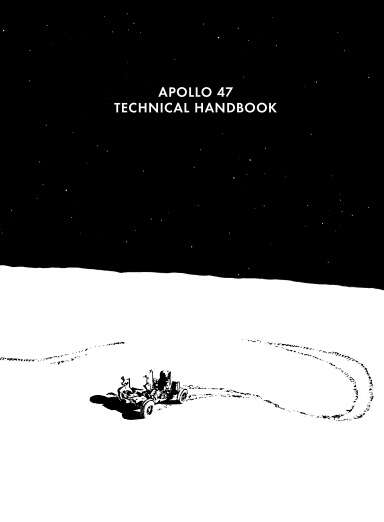I started to feel that I didn’t know roleplaying games well enough so I came up with the plan to read a roleplaying game corebook for every year they have been published. Selection criteria is whatever I find interesting.

Apollo 47 Technical Manual is a physically imposing roleplaying game, clocking in at 1200 pages. There’s a brief explanation of the game mechanics and the concept of the game, an example of play and a series of tables with inspirational vocabulary and useful phrases. All this takes a couple dozen pages. The rest is filled with actual NASA documentation of things like power couplings or spacesuit gloves. It’s purpose is to serve as prompts for players who need inspiration for play.
If you’re stuck, you can always crack open the book at a random page. In this sense, the book is not a book that’s meant to be read cover to cover but rather a play aid.
The aim of the game is to replicate the sort of routine mission chatter familiar from movies when they set the scene for something more dramatic to happen. The dialogue between the astronaut and Mission Control is heavy with jargon, thick with constant callbacks:
“Confirm green six.”
“Green six confirmed.”
This is why the game is set during the Apollo 47 mission. It’s set in an alternate historical 80’s in a world where there were a long series of Moon flights. They’ve become routine, no longer the stuff of excitement and danger. The game actively eschews drama, seeking to focus on the quotidian interactions of a professional crew executing a technical mission.
The players take the role of the astronaut one by one, with other participants as voices on Mission Control chatter. The dialogue doesn’t have to be comprehensible. Rather, the game leans heavily on the aesthetics of it instead of practical functionality. You can say: “We got amber on the 23, amber on the 23, please check the transaxial flow on your end”, and nobody needs to know what any of that means. Including you.
The type of dialogue being simulated in the game is that of spaceflight, highly charged missions where technical accuracy is a matter of life and death. In the game, these communications become raw matter for a playful repurposing of aesthetic matter from real life and the movies.
Although the approach towards technical jargon is irreverent, the game is full of space nostalgia. Perhaps in another world a robust NASA program of manned spaceflight could have gotten us much further than it did in real life.